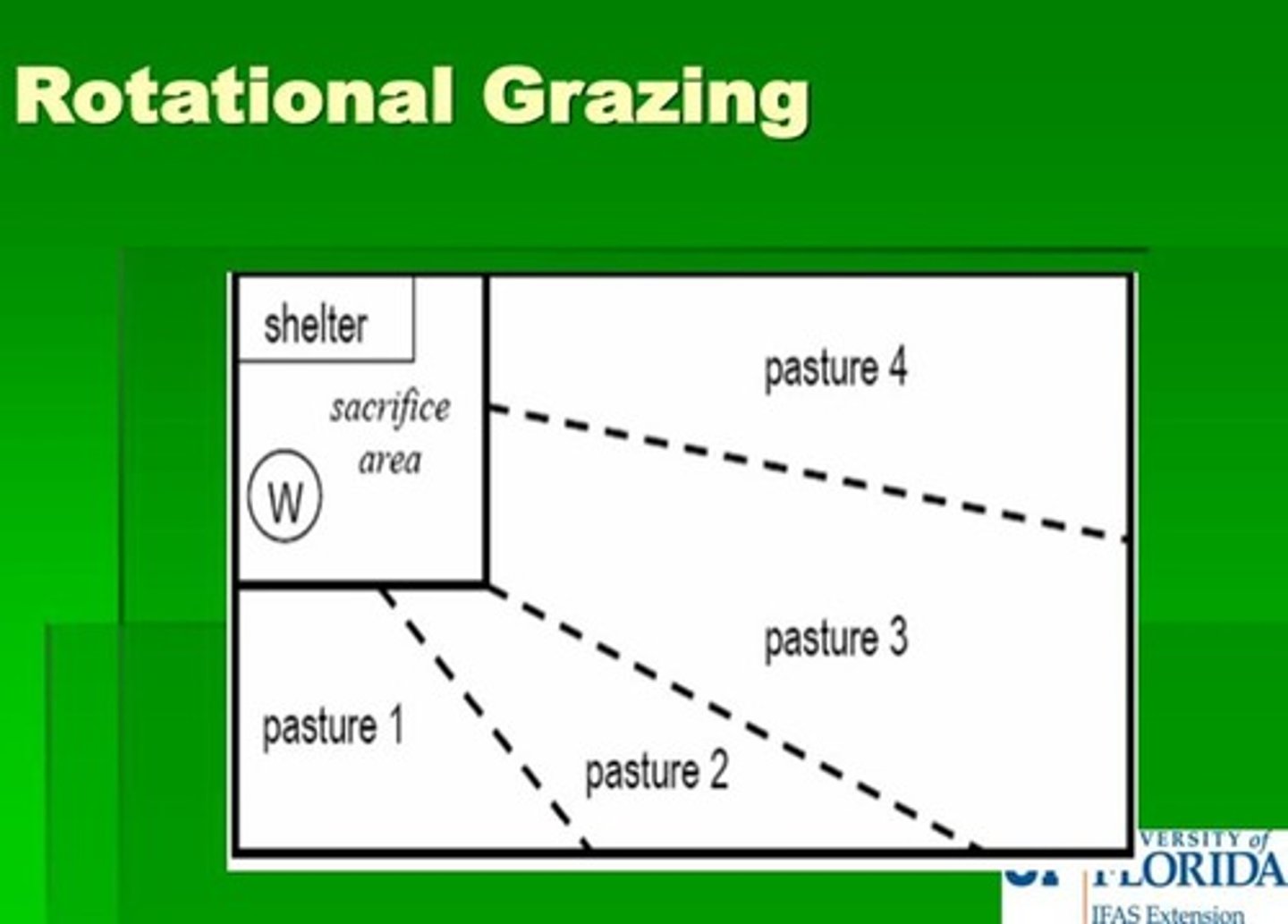Equine Safety and Pasture Management Guidelines
1/25
There's no tags or description
Looks like no tags are added yet.
Name | Mastery | Learn | Test | Matching | Spaced |
|---|
No study sessions yet.
26 Terms
Always speak to the horse before approaching or touching it from behind.
What should you do before approaching a horse?
Directly in front and directly behind.
What are the two blind spots of a horse?
Stay close to the horse and work as near as possible to its shoulder.
How should you position yourself when working around a horse?
Learn the proper technique for lifting the horse's feet.
What is the proper way to lift a horse's feet?
Be calm and confident; a nervous handler can make the horse nervous and unsafe.
What should you do if you are nervous around horses?
Know the horse's temper, reactions, and peculiarities.
What should you know about the horse you are working with?
Walk beside the horse, not ahead or behind, and always turn the horse to the right.
What is the correct way to lead a horse?
Never wrap the lead strap, halter shank, or reins around your hand.
What should you avoid doing with the lead strap or reins?
Turn the horse so it faces the door or gate before releasing the lead strap.
What should you do before releasing a horse from a stall or pasture?
Approximately 2 feet with a safety release knot.
What is the recommended length of rope for tying a horse?
Untie the lead shank to prevent the horse from pulling back.
What should you do before taking off a horse's halter?
Always wear a hard hat and boots.
What is an important safety measure when riding a horse?
Reduces feed costs, digestive upsets, boredom, weaving, and cribbing; increases fresh air, exercise, and joint and muscle activity.
What are the advantages of grazing horses compared to stalls?
Two acres of well-fertilized pasture; five acres if not fertilized.
How much pasture is needed per mature horse?
Apply fertilizer, apply lime, renovate every 6 years, and provide adequate moisture.
What should you do to maintain healthy pastures?

Dividing pasture into cells and allowing access to one cell at a time.
What is rotational grazing?
It eliminates selective grazing and allows grass to recover, increasing forage quality.
Why is it important to rotate grazing areas?
To identify nutrient deficiencies and pH levels.
What is the purpose of soil testing for horse paddocks?
Every 3 years to monitor pasture health.
How often should soil tests be performed?
Lime should be applied to increase the pH.
What should be applied if the soil pH is below the optimal range?
Nitrogen (N), Phosphorus (P), and Potassium (K).
What nutrients are critical for pasture growth?
Just before a light rain to aid dissolution.
When is the best time to apply fertilizer?
Regular mowing and targeted herbicide use.
What should you do to manage weeds in pastures?
They fix nitrogen from the atmosphere and reduce the need for nitrogen fertilizer.
What is the benefit of incorporating legumes into pastures?
A pH of 5.5 to 6.
What is the ideal pH range for soil to ensure optimal nutrient availability?
Composting is the best way to manage manure.
What is the best way to manage manure?